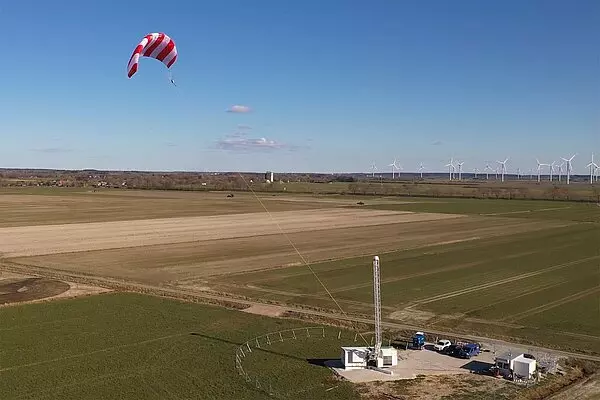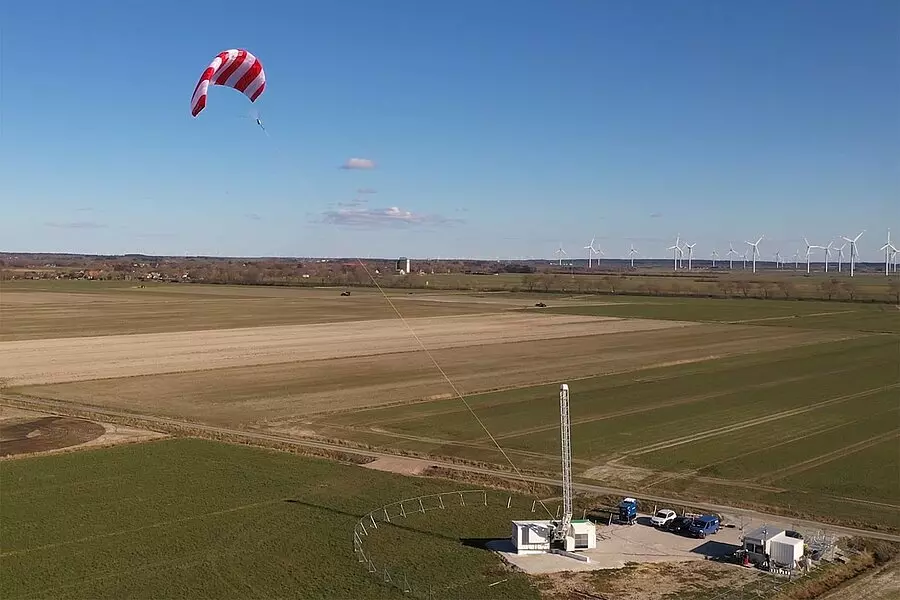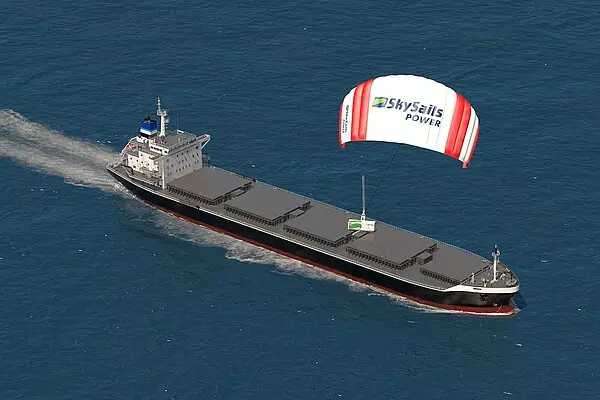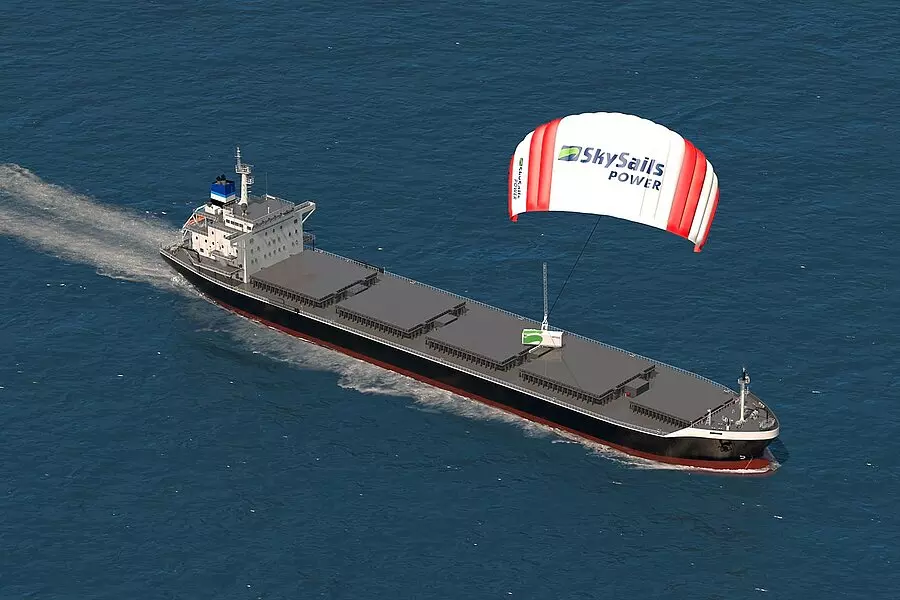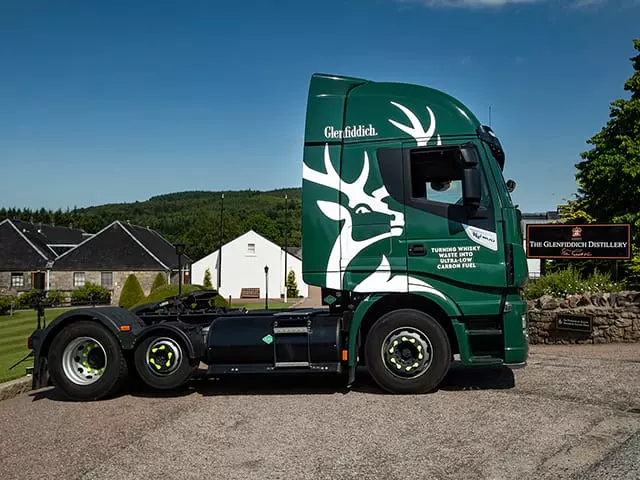Kites over Klixbüll:
SkySails Power in the High Wind
In bright red and white, it flies its eights in the North Frisian municipality of Klixbüll and attracts many an astonished glance. Germany's first flying wind turbine impresses with a stately 120 m2 kite that harnesses the wind where it blows strongest: up to 400 metres above the ground. On the innovative energy coast, the cradle of wind power, Hamburg-based SkySails Power GmbH found the best possible partners for its high-altitude wind project. Schleswig-Holstein makes it possible: the state aviation authority, the Federal Ministry of Transport, the surrounding municipalities, the DRF Air Rescue Service and the Air Sports Association worked together to set up a flight restriction area for the power kites. The pilot project is intended to provide important insights into the chances of aviation wind turbines as clean power generators, both nationally and internationally.
The fascination of kite flying
The dream of flying and generating electricity: the use of wind occupied CEO and founder of the SkySails Group Stephan Wrage even as a teenager. Immediately after his engineering studies, he started developing paragliders that tow ships to reduce their fuel consumption. Today, his now more than 20 years of experience with automated kites are put to good use in the sophisticated technology of flying wind systems. One person who also knows a lot about kites, wind and weather is Alexandra Hamel, Team Leader Technical Sales at the SkySails Group. Before the enthusiastic kitesurfer joined Wrage, the industrial engineer specialised in wind power - and founded a company that organises kite surf camps. "It is a fascinating task to work on this new technology. It has enormous potential."
A beacon of hope for the energy transition
Wind energy light - unlike conventional wind turbines, the flying technology can be installed without much effort. On the truck and off: the ground station contains a winch with built-in generator and a launch and landing mast for the paraglider. The life of the kite consists of constant ups and downs. In the ascent phase, it pulls the rope off the winch in steered figure eights, causing the generator to produce electricity. The second phase means retraction. When the rope reaches the maximum length of 800 metres, the kite is pulled in with the help of the generator. For this, the kite moves into a position where it offers little resistance, so that the rope is wound up with very little energy. The result of the yo-yo principle is an output of 100 to 200 kilowatts.
It is a fascinating task to work on this new technology. It has enormous potential.
Team Leader Technical Sales at the SkySails Group
High-flyers for all
From Klixbüll to Kenya, the almost unlimited application possibilities are a convincing advantage: whether as a stand-alone solution for industry and municipalities, as a supplement to existing energy projects or as an island solution in remote areas without a stable power grid connection. "Because the stronger winds of higher layers are used, our power kites can generate electricity even when there is little wind on the ground," explains Alexandra Hamel. "And in areas with strong storms, the kite can be quickly retrieved and stowed away." Innovative power and technical expertise made in northern Germany for the whole world - just like the headquarters, a kite workshop is also located in Hamburg, while the ground stations are produced in Seevetal (Lower Saxony).
So everyone is looking to Klixbüll: the results of the pilot project are eagerly awaited. RWE Renewables has already agreed on a cooperation with SkySails Power at the beginning of 2021 and is buying an airborne wind turbine to test the technology for three years.



